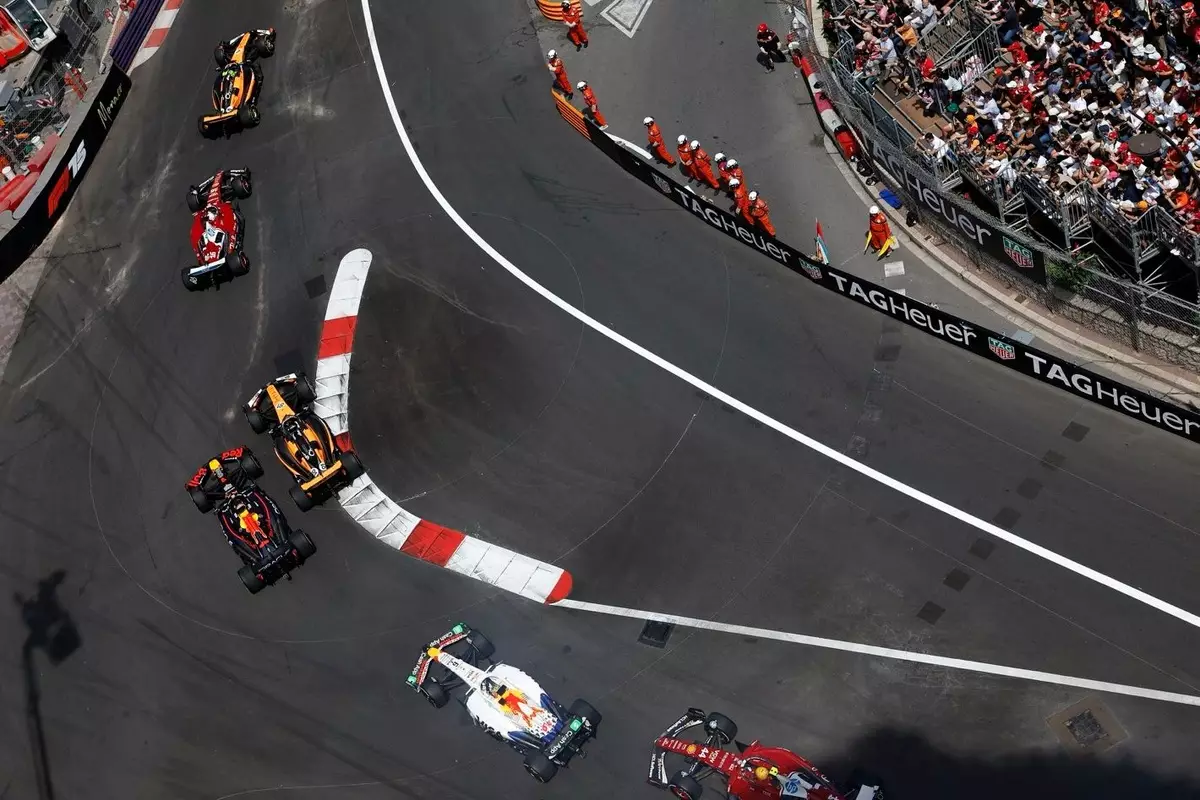The Monaco Grand Prix, a cornerstone of the Formula 1 calendar, has become synonymous with glamour and prestige. However, the spectacle of fast cars weaving through the narrow streets has often been underscored by an unfortunate tendency toward predictable outcomes. As George Russell pointed out after yet another unimpressive race, it’s time to consider a radical reimagining of this historic event. The 2023 edition reaffirmed a troubling reality: when innovation fails, the status quo can feel stifling.
In a bid to inject freshness into the procession that often defines Monaco, the FIA and Formula 1 introduced a rule forcing teams to utilize three sets of tires, aiming to promote more strategic diversity and, hopefully, allow for the unexpected. Unfortunately, this well-intentioned experiment fell flat. Although there was potential for an exciting two-stop strategy to shake things up, the front-runners finished in familiar positions as team tactics manipulated the race to favor position instead of genuine competition.
The Illusion of Competition
As Russell noted, the qualifying sessions brim with action and adrenaline, dwarfing the actual race in excitement and engagement. The instance where drivers slowed intentionally to create gaps for teammates only drew ire; rather than promoting racing, it fostered an atmosphere where tactics took precedence over true speed. The result? Russell found himself unable to make significant progress after facing a technical setback that impeded his qualifying session.
Russell’s attempted maneuver to overtake Alex Albon served as a microcosm for the day’s frustrations. While racing purists can appreciate the subtle nuances of strategy, the casual fan becomes exasperated when the race is characterized by tactical pacing. The reality is that the allure of Monaco isn’t merely in the luxury that surrounds it but the thrill that should accompany the racing. If drivers find themselves nursing tires at speed—essentially cruising to maintain position—the fundamental spirit of competition is lost.
Embracing Change: Rethinking the Format
The time has come to challenge the existing race format radically. Russell’s provocative suggestion of a two-day qualifying extravaganza could ultimately serve better than the traditional race, incorporating the excitement spectators crave. Imagine a Saturday showdown where pole position earns not just bragging rights, but tangible rewards, followed by a Sunday clash where the points are laid on the line once again. By focusing on qualifying ahead of race day, F1 could rejuvenate interest, allowing talent and speed to shine rather than being bogged down by the limitations of the circuit.
The prospect of a “qualifying race” challenges the archaic notion of how we perceive Grand Prix racing. Spaces need not be treated as mere processional courses, but rather as theatres for gladiatorial combat, ensuring that the best driver emerges victorious not just on Saturday, but on Sunday as well. In a world where the popularity of motorsports hinges on the engagement of fans, revisiting traditional formats could attract new audiences while revamping the stagnant viewing experience of the Monaco Grand Prix.
The Challenge of Monaco’s Circuit
Monaco’s circuit itself presents unique challenges that have only intensified this growing concern about race efficacy. As Russell aptly described, it can be vastly easier for slower cars to impede the faster ones, effectively transforming a race into a game of cat-and-mouse rather than a true test of raw pace and skill. The narrow streets of the principality, once the epitome of racing excellence, have become an arena that emphasizes endurance and patience over raw speed.
The sentiment shared by Russell suggests a collective yearning to not only preserve the charm of Monaco but also to rejuvenate its competitive spirit. The decision to keep its original layout could be seen as romantic, but the reality entails revising our expectations of what a Grand Prix should encapsulate. Each lap should inspire awe and intensity, a vibrant testament to what makes F1 thrilling at its core.
As we look ahead, it’s evident that the iconic Monaco Grand Prix needs to evolve. Russell’s candid reflections and innovative suggestions may represent necessary changes. Otherwise, the race risks becoming a historical footnote rather than the celebrated event it deserves to be in the annals of motorsport history. The future may hinge on embracing the daring and redefining the race format—not just for Monaco, but as a beacon of change for Formula 1 itself.

